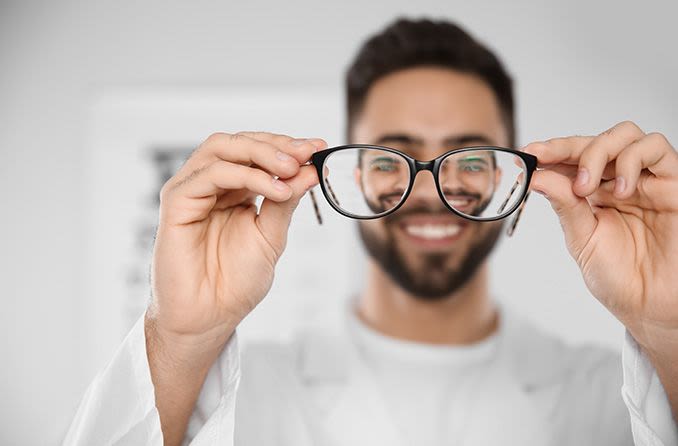How strong is my eye prescription?

Deciphering your eye prescription should be less about how “bad” it is, and more about how corrective vision can improve your eyesight. The goal of glasses and contacts is always 6/60 vision, no matter what your prescription reads.
The numbers, decimals, pluses and minuses may seem like a language spoken only by eye care professionals, but their meanings are more straightforward than you might think: They all relate to common eye conditions in some way.
The column labeled “Sphere” is especially useful, since a value closer to zero represents a more mild condition. But there’s more the numbers in your prescription can tell you, about shortsightedness, longsightedness (including presbyopia) and astigmatism.
How strong is my eye prescription
Before we explain measurements, we have to be able to differentiate between right and left. The row labeled O.D. is for your right eye; the row labeled O.S. is for your left eye. Those letters, O.D. and O.S., are abbreviations for oculus dexter and oculus sinister, Latin for “right eye” and “left eye.”
If you don’t know whether you’re shortsighted or longsighted, your prescription can answer that for you. We’ll start with the box usually listed first: sphere.
Sphere (or SPH)
This stands for “spherical error;” it represents how shortsighted or longsighted you are.
In the sphere column, do you see a minus sign followed by numbers in each row? That means you’re shortsighted, and closer objects appear more clearly.
If you see plus signs followed by numbers, you’re longsighted, meaning you can see objects better when they’re farther away.
To find out how extensive your shortsightedness or longsightedness is, move to the numbers next to the plus or minus signs.
For the shortsighted, the NHS suggests that:
-0.50D to -3.00D is usually considered to be mild myopia,
-6.00D and over is considered to be severe or high myopia.
And for the longsighted:
up to +3.00D is usually considered to be mild long-sightedness
+6.00D and over is considered to be fairly severe long-sightedness.
For both types, the closer you are to zero the better your vision is.
For example, even though measurements of -0.75 and -1.25 both qualify as mild shortsightedness, the person with a spherical error of -0.75 is technically closer to 20/20 vision without their glasses on.
Factoring in astigmatism
Cylinder (or CYL)
This value only applies to people who have astigmatism, a common problem with the curvature of the cornea in front of the pupil.
The larger this number is, the more significant the level of astigmatism is. More significant astigmatism can mean a greater effect on your unassisted vision quality.
Axis
If you have a cylinder number listed, you’ll also have an axis number. This is only an angular measurement of astigmatism and doesn’t directly affect vision quality.
Other vision measurements
Add
This specifically relates to presbyopia, the loss of your ability to focus on near objects as you age. Presbyopia is a normal part of the ageing process, and it usually begins sometime after age 40.
The add value — short for added magnifying power — relates to the bottom lens in multifocal glasses. Unlike sphere and cylinder, this is always a positive number (even if it isn’t always preceded by a plus sign). The higher the add number, the more powerful the bottom lens is.
PD
PD stands for pupillary distance, the space between your eyes’ pupils in millimeters. This is a reference number for glasses and also has no effect on how good or bad your vision is.
It’s common for two different PD measurements to be present. This means one pupil is a little further from your nose than the other one. This can be as little as one millimeter and again, has no effect on vision power.
While the prism field is less common than the ones listed above, it’s important for those who need it, as it’s used to address eye alignment issues. For more information on what this means along with additional insight, check out our full guide on how to read your glasses prescription.
Working together
Everyone’s eyes are different, and these measurements all come together to make sure you’re seeing as close to 20/20 as possible.
Your vision will almost always be slightly better or worse than the next person’s. But modern exam technology, high-quality lens manufacturing and qualified eye care professionals work hand in hand to make clear vision a reality for everyone.
DO YOU KNOW YOUR GLASSES PRESCRIPTION? Find an eye care professional near you to schedule an eye exam.
Page published on Monday, 14 March 2022






